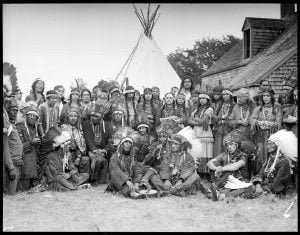Massachuset Indian Chiefs and Leaders
Attacks, Crispus Attacks, Crispus. An Indian-Negro half-blood of Framingham, Massachusetts, near Boston, noted as the leader and first person slain in the Boston massacre of Mar. 5, 1770, the first hostile encounter between the Americans and the British troops, and therefore regarded by historians as the opening fight of the great Revolutionary struggle. In consequence of the resistance of the people of Boston to the enforcement of the recent tax laws a detachment of British troops had been stationed in the town, to the great irritation of the citizens. On Mar. 5 this feeling culminated in an attack on the … Read more

